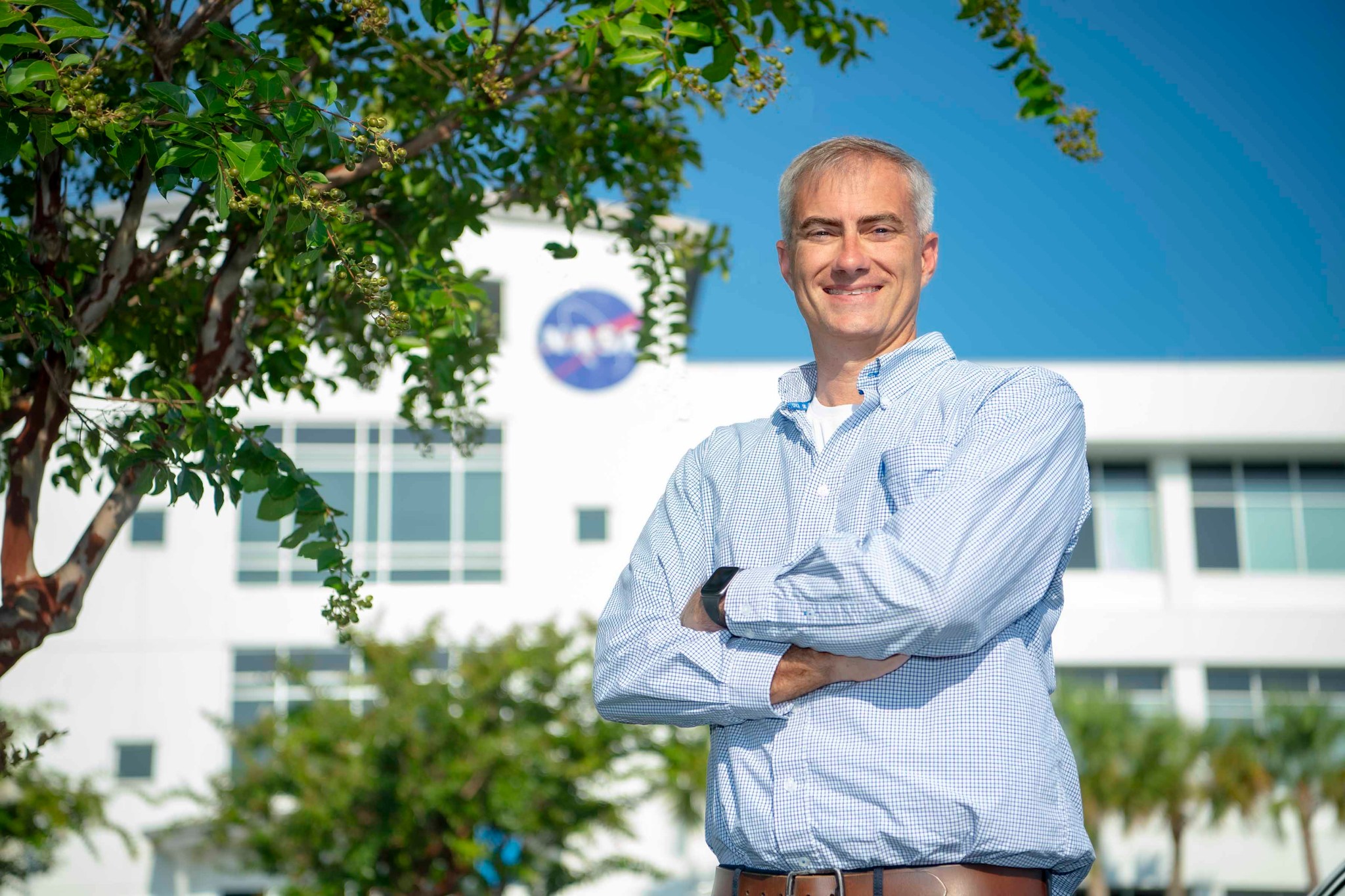
Joseph Ladner's experiences working at NASA's Stennis Space Center near Bay St. Louis, Mississippi, motivate him to "pay it forward" so more people can be a part of something great.
"It is exciting to be at a place like NASA Stennis that continues to reinvent itself to stay relevant," Ladner said. "You can do just about anything you can imagine with a workforce committed to its success."
The Gulfport, Mississippi, resident is the lead budget analyst in the NASA Stennis Office of the Chief Financial Officer. His team manages budgets that fund the nation's premier propulsion test site.
Ladner can point to three pivotal moments propelling him to a career with NASA. The first came by attending ASTRO CAMP at NASA Stennis every summer as a child. The thrilling experiences of launching paper rockets and conducting science experiments left him with the question, "How do I get to work there?"
The answer came into focus years later. Much like launching paper rockets, Ladner's career started at ground level before reaching higher heights.
He started on the lowest end of the General Schedule pay scale as a GS-1 clerk for the Naval Oceanographic Office, located at NASA Stennis, while attending Mississippi Gulf Coast Community College.
A second pivotal moment also came during this time. The Saucier, Mississippi, native credits mentor Pamela Stenum for putting him on a career path in procurement so he could use the math and analytical skills that came natural to him.
The clerk role, expected to be only for one semester, continued through Ladner's studies at The University of Southern Mississippi, where he earned a bachelor's degree in Business Administration.
"I literally came in from the bottom, and someone saw potential in me," Ladner said. "She realized I was a hard worker and that I cared about the product I was putting out."
The third, and most profound, moment leading Ladner to a NASA career happened when the space shuttle Columbia orbiter suffered a catastrophic failure during return to Earth.
"I will never forget standing in the crowd that morning waiting for the launch of Columbia (in 2003) and hearing the commander over the loudspeakers thank everyone for the efforts to get them to this point and saying farewell to his family," Ladner said. "No one knew it would ultimately be the crew's last farewell. That tragic incident left me with a greater sense that there are many opportunities, but life is short. That thought and NASA's return to flight mission left me with a desire to be part of NASA."
Ladner started his career with the agency two years later and has worked inspired ever since. His role as lead budget analyst contributes to the Artemis campaign that will establish the foundation for long-term scientific exploration of the Moon, land the first woman, first person of color, and its first international partner astronaut on the lunar surface, and prepare for human expeditions to Mars for the benefit of all.
His job currently involves navigating challenges of increased costs and reduced budgets. From Ladner's perspective, the challenges present opportunities for innovation and new ideas.
"Knowing my work is part of a greater cause impacting the Artemis Generation that could make a difference to society is the best thing about working at NASA Stennis," Ladner said. "There is some awe and wonder about working at NASA, so it is neat to say you are a part of that."






